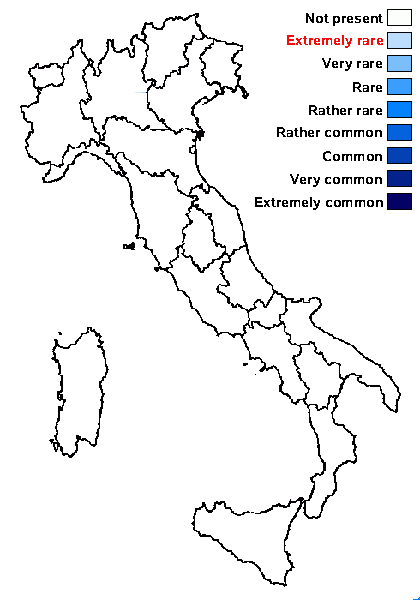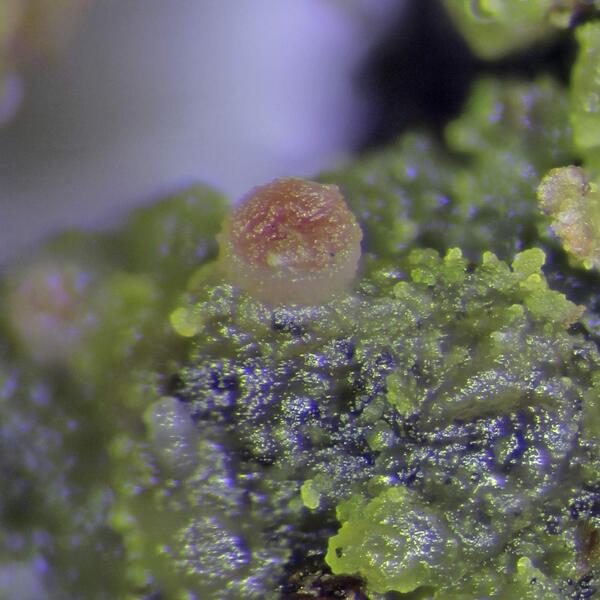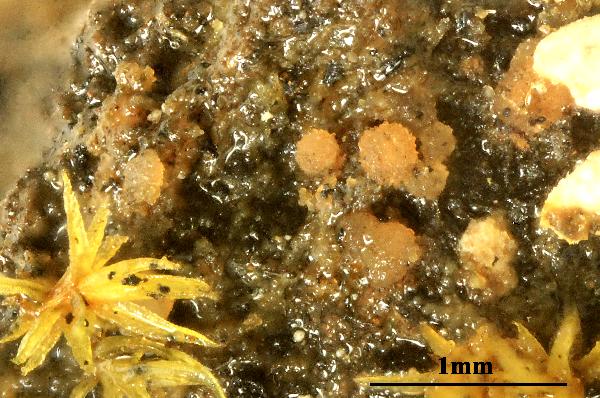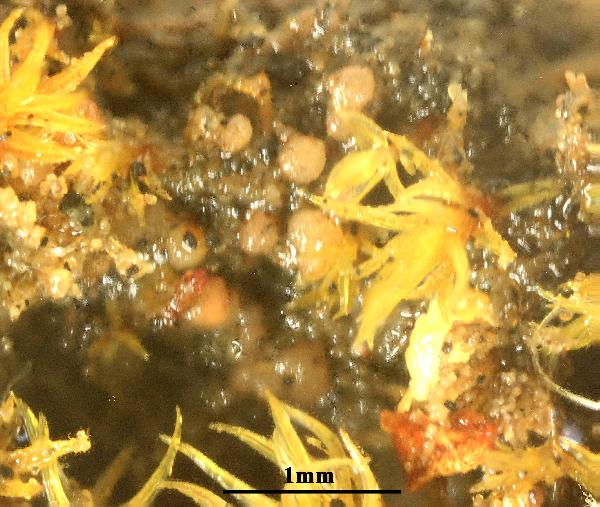Vezdaea acicularis Coppins
Lichenologist, 19: 169, 1987
Synonyms:
Distribution:
Description: Thallus crustose, thinly episubstratic, consisting of dark green, subglobose goniocysts, the wall smooth or covered in shallow, to 2 μm tall papillae. Apothecia short-lived, 0.2-0.4 mm across, without a proper margin, scattered or confluent in clusters of 2-3, convex and appressed, rarely shortly turbinate when young, grey-white to pink-brown, matt, sometimes finely tomentose (microscope!). Proper exciple absent; hymenium lacking gelatine, consisting of asci and strongly branched, sparse paraphyses which rarely reach the surface of the hymenium; hypothecium absent. Asci 8-spored, cylindrical, thick-walled, with a thick I+ blue apex (except for an apical pore). Ascospores 7-11-septate, hyaline, thread-like, 60-85 x 2-2.5 μm, the lower end tapered to a narrow point. Photobiont chlorococcoid (Leptosira). Spot tests: all negative. Chemistry: without lichen substances.Note: on soil, moribund bryophytes and algal films over siliceous substrata in sheltered, moist situations, often also on metal-contaminated ground. Most frequent, but generally rare, in Western Europe. To be looked for in Italy.
Growth form: Crustose
Substrata: soil, terricolous mosses, and plant debris
Photobiont: green algae other than Trentepohlia
Reproductive strategy: mainly sexual
Most common in areas with a humid-warm climate (e.g. most of Tyrrenian Italy)
Species of metal-rich rocks
Pioneer species

Predictive model

Photo uploaded by Paul Cannon – CC BY NC Source: https://fungi.myspecies.info/all-fungi/vezdaea-acicularis
Yorkshire, UK
Growth form: Crustose
Substrata: soil, terricolous mosses, and plant debris
Photobiont: green algae other than Trentepohlia
Reproductive strategy: mainly sexual
Most common in areas with a humid-warm climate (e.g. most of Tyrrenian Italy)
Species of metal-rich rocks
Pioneer species

Predictive model

 INDEX FUNGORUM
INDEX FUNGORUM
 GBIF
GBIF




